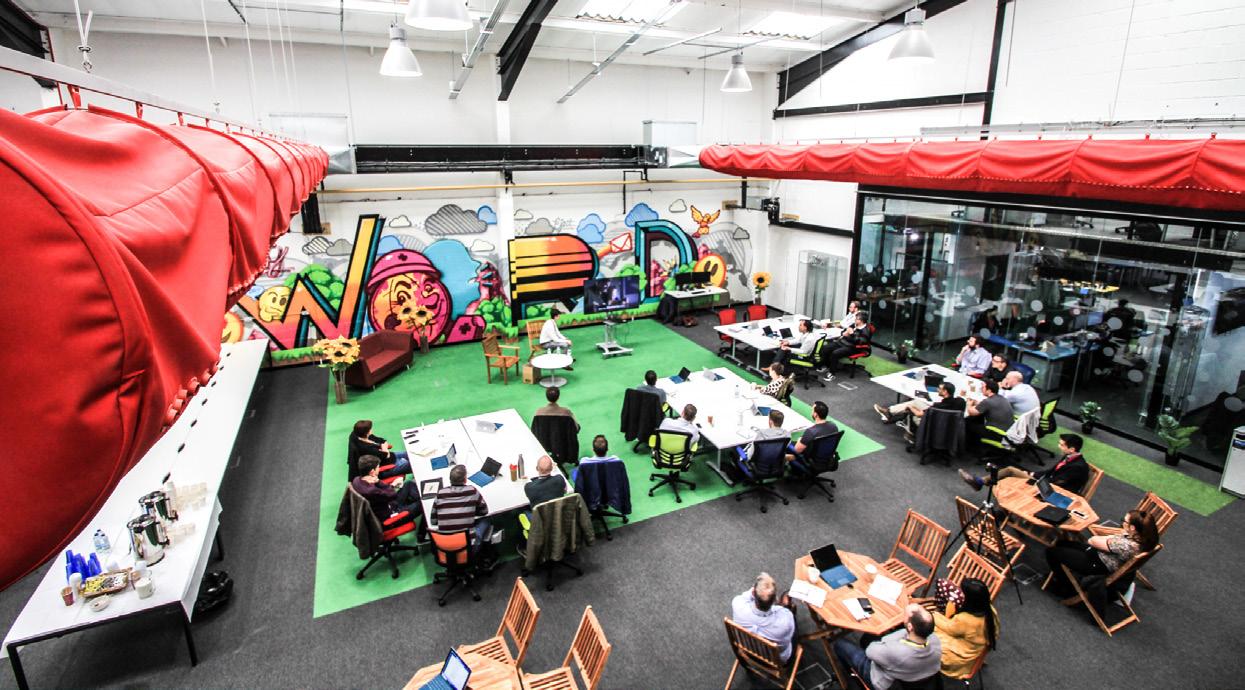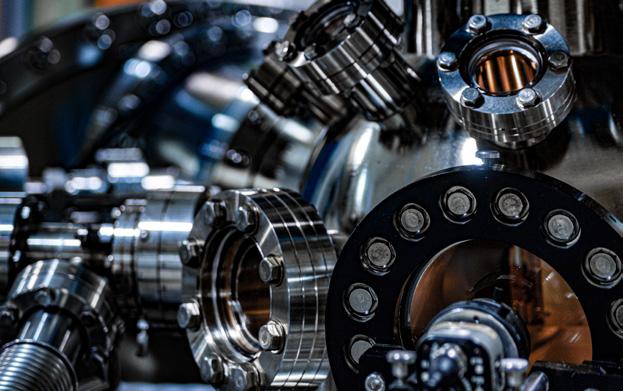
10 minute read
TenneT
SEVEN LARGE POWER PLANTS, EVERY YEAR
Manon van Beek is the CEO of TenneT. She harbours high ambitions for her firm and believes it is imperative to act now to meet the target of decarbonising the European economy by 2050.
“There is simply no time to lose,” affirms van Beek. “Today, only three GW of renewable energies are built and connected offshore in Europe each year, reaching 27 GW connections of offshore wind in the North Sea until 2030. After 2030, connections of GW have to be multiplied to an annual offshore generation capacity in the magnitude of seven large power plants.”
Alongside its partners, TenneT is working towards a first internationally connected offshore wind power hub in the North Sea. The firm is set to build a first cross-border 12 GW hub by 2035 and to connect two GW to Denmark, four GW to The Netherlands and six GW to Germany, an effort recently financially supported by the EC through its Connecting Europe Facility. The consortium of North Sea Wind Power Hub programme will also work on the challenge to be innovative on other parts of the offshore energy infrastructure.
“For example, this is done by continuously investigating on how artificial islands can contribute to cost efficiency when offshore wind areas become bigger in size; like the three to ten GW ‘energy island’ recently announced in Denmark,” explains van Beek. “From a certain size it might be more efficient to consider multi-purpose island solutions. Island solutions can also provide a role from a system integration perspective. A part of the energy from offshore wind can be transmitted to the shore in the form of electricity, but another part can be converted to hydrogen.”
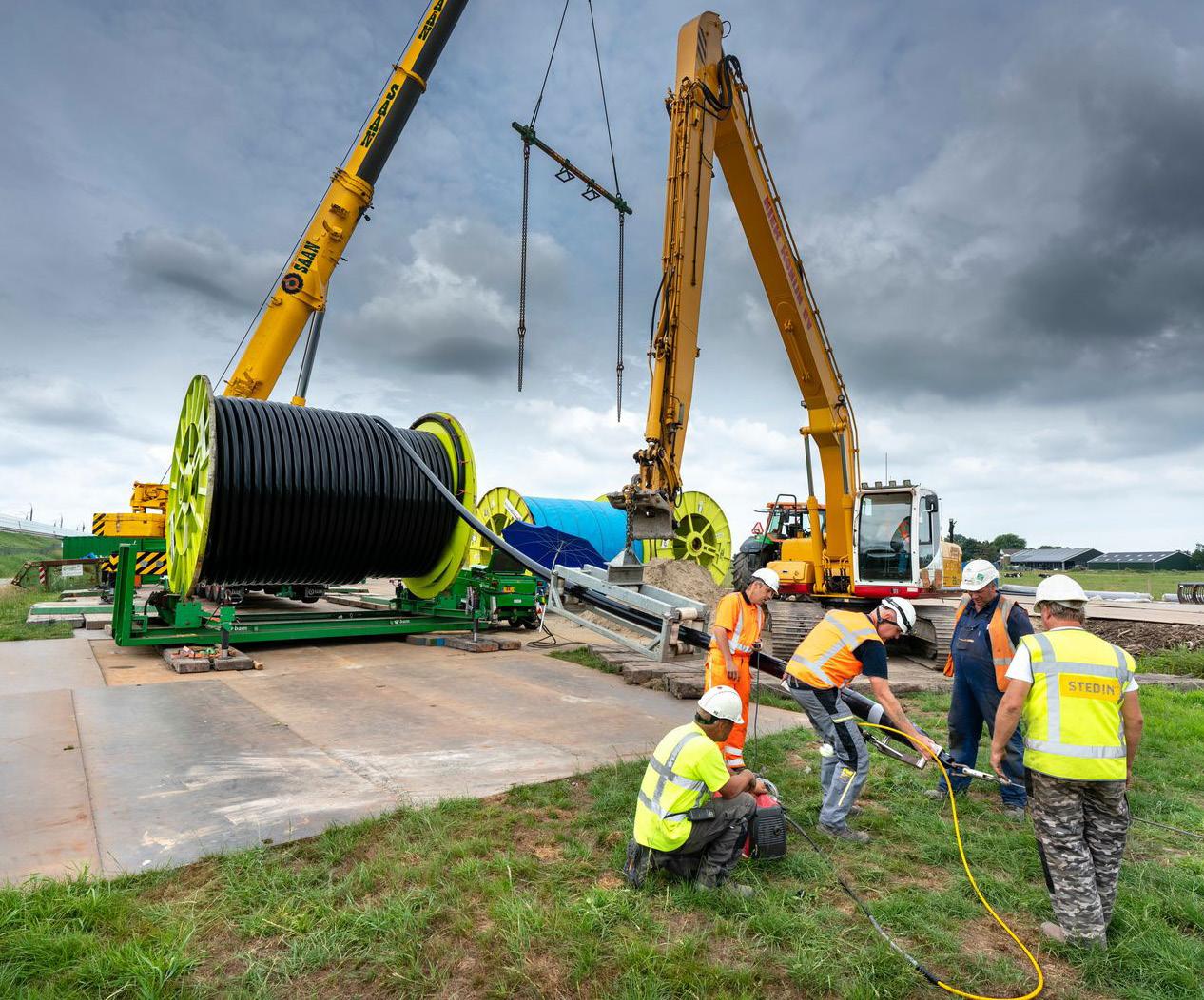
Manon van Beek, CEO
Dragados Offshore
Dragados Offshore is a leading international offshore contractor for the Oil & Gas and Renewable industries and has for five decades successfully delivered over 90 projects worldwide, covering Europe, USA, Africa and Central and South America in a responsible and safe manner, applying quality, schedule compliance and economic result.
Dragados Offshore provides optimal and innovate solutions within engineering, procurement, construction, operation and maintenance.
We are proud to be selected by TenneT to develop, build and deliver in partnership with Siemens the HVDC converter platforms of the DolWin6 HVDC grid connection and the BorWin5 HVDC grid connection Projects. While DolWin6 was a major milestone, being our first complete Renewable platform project, BorWin5 provides a perfect fit of workload and continuity.
New challenges are present throughout the value chain of renewable energies; from conceptual design and feasibility studies, manufacturing, construction and commissioning, to the subsequent operation and maintenance. Dragados Offshore faces these challenges and ensures “Building Excellence Worldwide” thanks to the fusion of our solid experience, our highly qualified and specialized team and our innovative designs.
Dragados Offshore will continue to foster innovation and attract the best talent to maintain the excellence of its services, remain a trusted partner and participate through its services in the creation of a more sustainable world.
COMPANY LOCATIONS AT A GLANCE
• Cádiz Yard and Headquarters, Spain • Tampico Yard, México • Altamira Yard, México • Logistics, Ciudad del Carmen, México
• Business and commercial, Houston, TX USA
www.dragadosoffshore.com
SPECIAL RESPONSIBILITY
These changes are all part of a revolutionary development of the energy grids - the backbone of the energy system – that are being used in completely different ways.
“Our energy network - one of the safest and most reliable in the world - was once built to meet the demand for energy. Now it is changing into a multifunctional connector of electricity supply, demand and storage,” discusses van Beek. “That’s why the electricity sector has a special responsibility to achieve the European climate goals. The grid becomes a multifunctional connector and at the same time electricity is the fastest growing consumer energy; basis for decarbonising transport, building and industrial sectors. All that electricity must be transported to conurbations and economic centres, places where citizens, local and regional government decide on new routes, new wind turbines, the purchase of e-cars, the installation of heat pumps and structural changes in industry.”
In the transition to renewable energy, sustainability is not the only prime objective. The electricity supply must also be secure and affordable. Last year, TenneT’s security of supply was 99.9999 percent.
“This is not going to be taken for granted in a system that is weather dependant,” adds van Beek. “We want security, we want to grow renewables, and - last but not least - do it in an affordable way. The task of changing the entire energy system from a certain to a sustainable and weatherdependent system is as big as the famous Delta Works.”

INTERNATIONALLY COORDINATED
Upscaling – in both speed and capacity - of renewables in the system, and at the same time changing grids functions under strict conditions, needs to be an internationally coordinated process. Based on a strategy to introduce the
right technologies at the right time, with a flexible cross-border regulatory framework to achieve CO2-reductions at the lowest possible cost and the greatest possible social acceptance.
To stabilise the grid and secure the hours when the sun does not shine and the wind does not blow, flexibility at decentralised and centralised levels is needed. TenneT is building electricity highways that connect countries and electricity markets (interconnectors). Modern high-voltage infrastructure is internationally connected: NorNed, BritNed, COBRAcable, NordLink, as well as the WindConnector in the coming years, which is a cable simultaneously functioning to transport offshore wind to an onshore grid, and to connect countries and markets. This is set to lead to the optimisation of connections between supply and demand of sustainable electricity.
Electrolysis, turning electricity into hydrogen, becomes part of the new energy system. Green hydrogen is needed for sectors that are difficult to electrify: aviation, heavy transshipment, shipping, industry.
“It’s also needed for storage. In certain situations, using the existing gas grid for hydrogen can reduce the need for investment in new electricity infrastructure,” explains van Beek. “Ideally, factories with electrolysers should be located as close as possible to the landfall of offshore wind and as close as possible to the location where green hydrogen will be used, i.e. as close as possible to industry.”
NEW WORLD STANDARD
TenneT is constantly working on smart, efficient and company-wide standardised strategies, solutions and processes, needed in order to live up to the European climate goals. René Postulart, Associate Director of Large Projects Offshore believes that an innovation that will help upscaling growth in renewable energies is the two gigawatts cable connection.
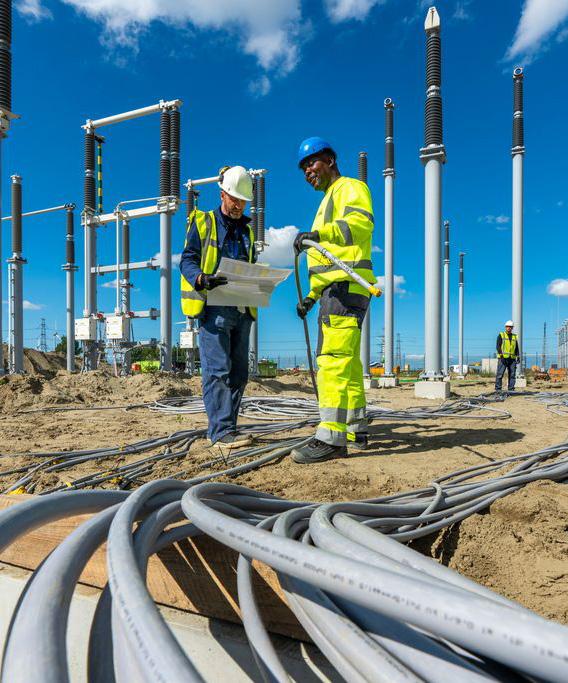
“TenneT, together with HVDC and cable manufacturers, is currently developing this new world standard 2GW system for connecting offshore wind farms,” says Postulart. “A 525 kV HVDC cable system allows to transport up to two gigawatt per connection. This innovation contributes to the lowest cost of energy for bigger wind farms further offshore, with minimal impact on the environment.
“At this very moment, invitations to tender go out for the first projects, IJmuiden Ver in the Dutch North Sea. With a minimum of five offshore projects in the portfolio until 2030, and surely many more to come after that, the two GW Programme is a major challenge for TenneT.”
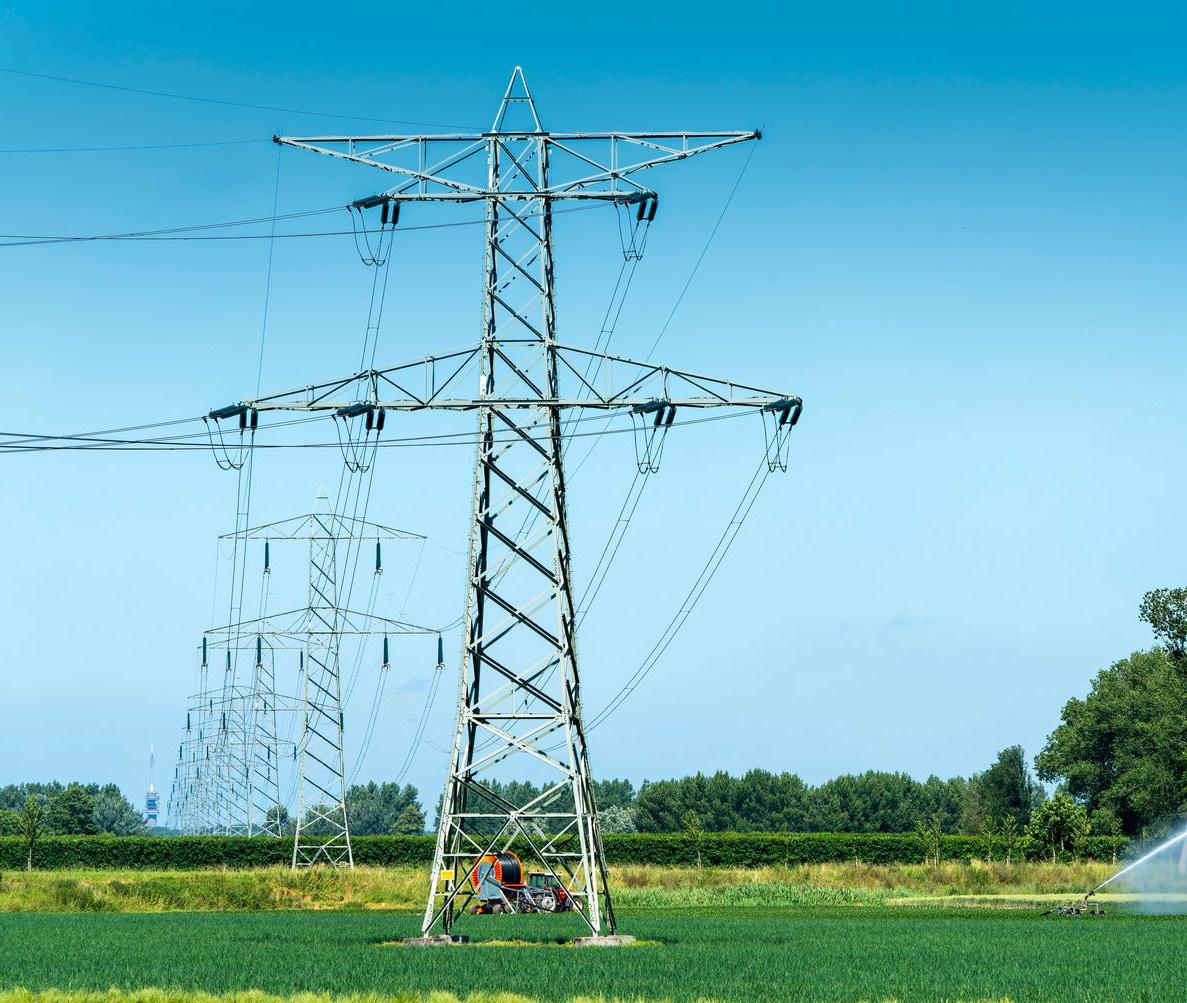
PAN-EUROPEAN FLEXIBILITY
To accommodate the new energy sources and match them with society’s growing need for electricity, requires a high degree of flexibility to ensure that the grid remains in balance. A new cross-border blockchain platform – Equigy – does exactly that. Jointly developed by four of the largest European transmission system operators: Swissgrid (Switzerland), Terna (Italy), APG (Austria) and TenneT (Germany and the Netherlands), Equigy will enable millions of European households and owners of electric vehicles to actively offer the flexible capacity of their cars, house batteries and heat pumps on the energy markets for the stabilisation of the electricity system and thus gain financial benefits from the energy transition. Equigy starts with four countries, and the idea is to make this a pan-European platform. A highly ambitious task, but technologywise, it is already happening.
LOVE ME - TENDER
For TenneT, the race to a renewable energy system is to be seen in all business activities. For example, in a tender-procedure: innovative and rigorous solutions are needed
to renew, adapt or expand the 360 high-voltage substations in the Netherlands within 10 years. Especially since the job is also being done under exceptional circumstances: time pressure and a ‘moving playing field’, caused by the energy transition. TenneT deliberately did not operate as a traditional customer, however, asked its existing partners about their experiences.
“What would they like to do differently? How can we organise better cooperation? TenneT also talked to automation companies and engineering firms and asked: how are we going to approach this in the future? Our motto for this working method: ‘translate the clearly formulated challenges into robust and effective solutions,’” says van Beek. “That’s how TenneT reaches out to as many parties as possible, because there is just a huge amount of work.”
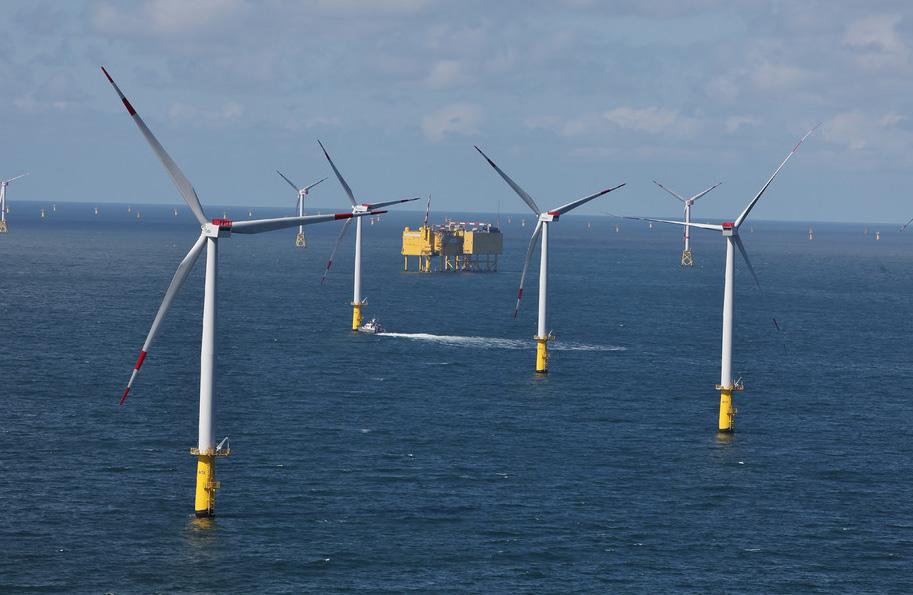
PRO-ACTIVE SUPPLY CHAIN MANAGEMENT
Even in supply chain management, a programme has been launched to prepare TenneT for the future. Sjouke Bootsma, Associate Director of Supply Chain Management at TenneT, believes that the integrated SCM (iSCM) significantly contributes to the expansion and modernisation of TenneT’s grid infrastructure by ensuring that materials and services for projects are available in the right quality and quantity at the right time.
“iSCM establishes a forward-looking and pro-active supply chain risk management and develops innovative sourcing strategies to position TenneT as a ‘customer of choice’ in a highly competitive supplier market,” says Bootsma. “To accelerate the growth, iSCM also leverages digitalisation capabilities. As an integrated and agile programme, iSCM unifies processes and employees of different departments to optimally leverage synergies.”
CONNECTING PEOPLE
With TenneT looking to hire over 1,100 people in the next three years from a wide a spectrum of professions both in the Netherlands and Germany, Richard Gort, Director, Grid Field Operations at TenneT, confirms that his firm is doing its part to support its growing role in the energy market.
“These will be not only technicians and IT experts, but also communications specialists to participate in driving the energy transition,” says Gort. “While COVID-19 has impacted the Netherlands just like any other country, it has also helped to shift the focus to new ways forwards. In a way, COVID-19 is an opportunity to get the talent we need in the next few years.
“Now, maybe even more that before, people are looking for a purpose at work, and TenneT can offer that. We are connecting people to a brighter energy future, to lighten the way ahead together.”
Nederland Tel: 0800 836 63 88 Germany Tel: +49 (0)921 50740-0 www.tennet.eu
The Power of LANGUAGE

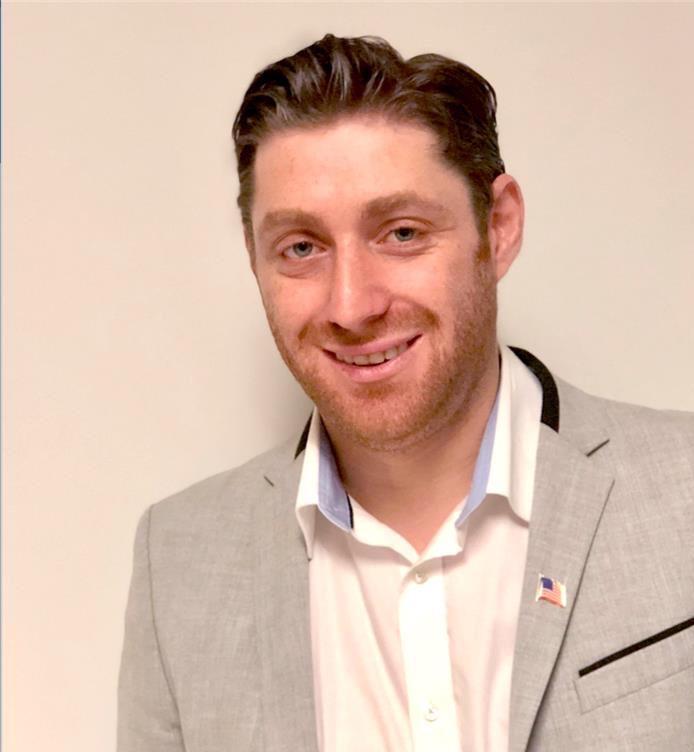

Dreaming of working at the top of the concrete jungle that is Wall Street isn’t uncommon.
However, very few UK-based young adults that harbour such a dream make that a reality. Joshua Gould was different.
Having been born in Leeds, England, Gould had always dreamed of working in the heart of New York City and at the age of 22, did just that. He stepped foot on US soil in 2006, just in time for a global recession to hit a year later. “I won’t forget what it was like during the 2007 financial crisis and housing collapse. You could actually get a taxi and if you went to an after-work bar, you could even get a seat.”
For many, it was a difficult time. However, Gould was adamant that he wouldn’t let an uncontrollable event stop him, and he understood the importance of adapting and pivoting quickly. “We focused on manufacturers who would trade with developing nations and the plan came off,” he recounts. “We also went after Government contracts as we didn’t believe the US Government was about to slow spending, at least not with George Bush’s plan to inject money into infrastructure, businesses and the military.”
And today, he serves as CEO of thebigword Group.
Joshua Gould, CEO at thebigword, discusses the evolution of the language technology industry and his company’s goal of making the world smaller by giving everyone the power to communicate without the language barrier
Writer: Sean Galea-Pace | Project Manager: Vivek Valmiki
Joshua Gould, CEO, thebigword

